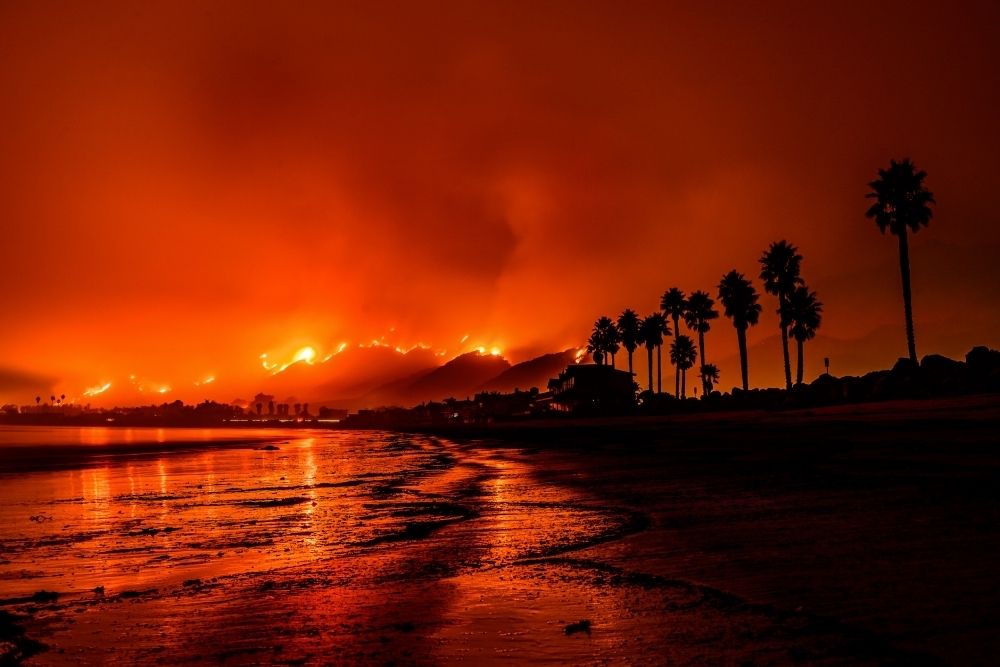
California’s frequent wildfires, floods, droughts and earthquakes rank it high among states most prone to natural disasters. In fact, according to a recent analysis of Federal Emergency Management Agency (FEMA) disaster declarations dating back to 1953, the Golden State is the runner up as the disaster capitol of the U.S. (coming in a close second behind Texas, which contends with deadly hurricanes, tornados and ice storms).
Considering California’s long history of catastrophic events — which have been increasing in number and severity with the onset of climate change — it makes sense that the UC system is home to some of the world’s foremost authorities and problem solvers.
Many of these experts, including faculty from UC Santa Barbara, will be guest lecturers for “Confronting Cascading and Concurrent Crises,” an online course for registered students systemwide assembled by the UC Disaster Resilience Network (UC DRN). Instruction begins on Jan. 17.
Launched in 2021, UC DRN “is a multidisciplinary consortium able to harness the breadth and depth of expertise at 10 campuses, five medical centers and three national labs to assist communities to mitigate, prepare for and recover from disasters and crises of all types,” said UC Santa Barbara alum Nicolás Pascal, the network’s founder and lead specialist.
“We have deep pools of talent across all 10 campuses,” Pascal added. “For many of these people, there’s no off switch. They are maniacs about helping people.”
The course, Pascal said, examines the full “life cycle” of various disasters, from flood and wildfire to food insecurity and viral-borne pandemics, with select academics sharing knowledge and expertise within the overarching goal of reducing risks and building community resilience.
Among the guest lecturers is Leila Carvalho, a UCSB geography professor currently studying sundowner winds and their role in exacerbating wildfires common to Santa Barbara County. Her lecture will cover weather, fire forecasting and the various ways wildfires can lead to other disasters, such as subsequent floods and debris flows from mountainsides destabilized by intense burning.
Nic Elmquist, a fuel specialist with the Montecito Fire Protection District in Santa Barbara County, will also address wildfire preparedness. Montecito firefighters were on the front lines during the record-breaking Thomas Fire of 2017 and subsequent debris flow in Montecito that killed 23 people and destroyed or damaged roughly 500 homes.
The idea to create a network to address natural disasters and other crises took root in 2010 when Pascal was involved in humanitarian relief efforts in Haiti just after the island nation’s deadly magnitude 7.0 earthquake. According to estimates by the Haitian government, the quake killed more than 200,000 and left more than two million people homeless. At the time, Pascal was working toward his master’s degree in global studies at UCSB and founded the Associated Students Human Rights Board on campus.
In Haiti, he noticed student leaders and faculty from several UC campuses pooling knowhow and outreach in the face of a seemingly insurmountable catastrophe. By 2011, UC campuses had entered into an agreement with the State University of Haiti to recognize the value of educational, cultural and scientific exchanges and to encourage members of their faculties, health providers and research communities to participate. This opened Pascal’s eyes to possibility.
“All 10 chancellors had signed on to it — it definitely got me thinking,” Pascal said. “I revisited it a few years later and since then I’ve been priming the pump and (recruiting) academics.”
(805) 893-3207



